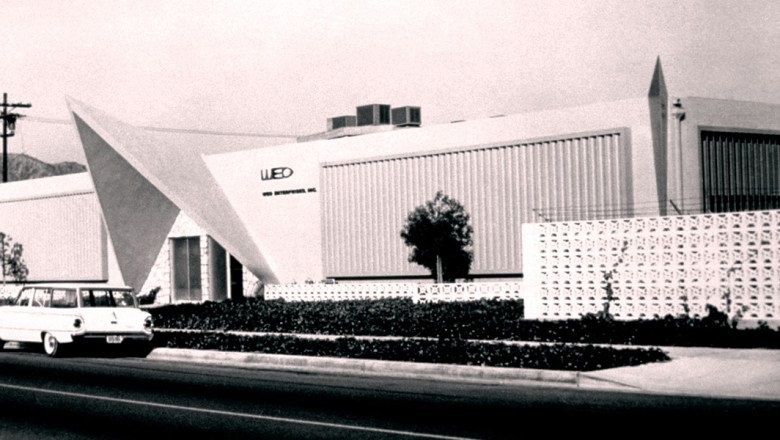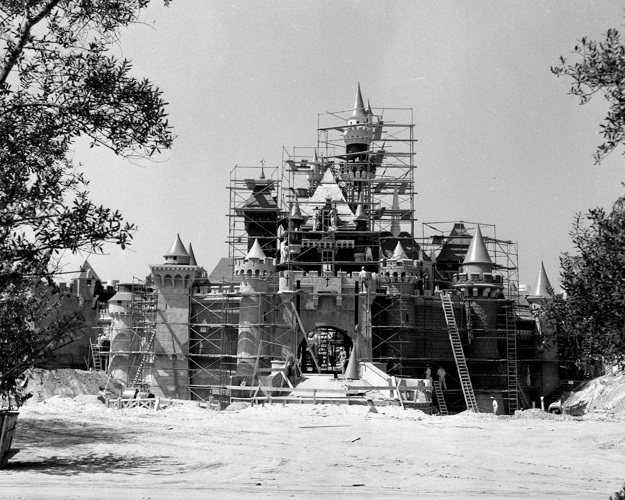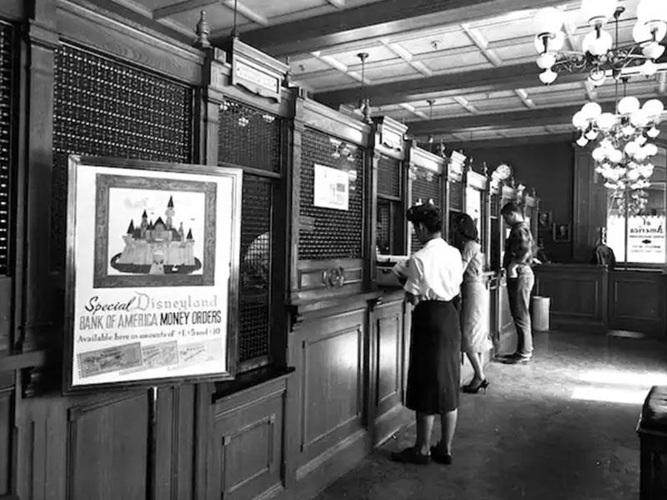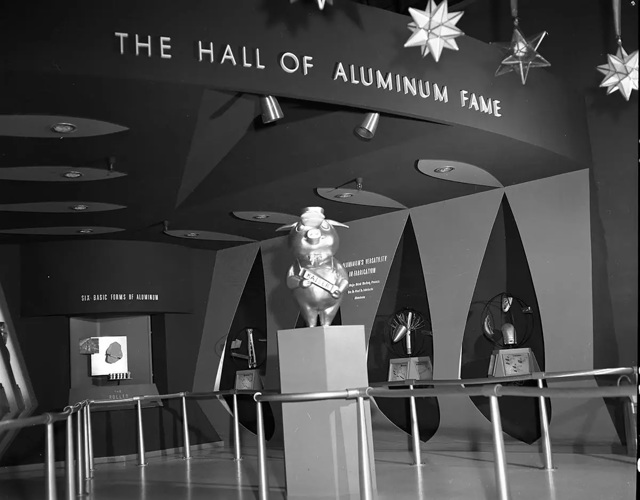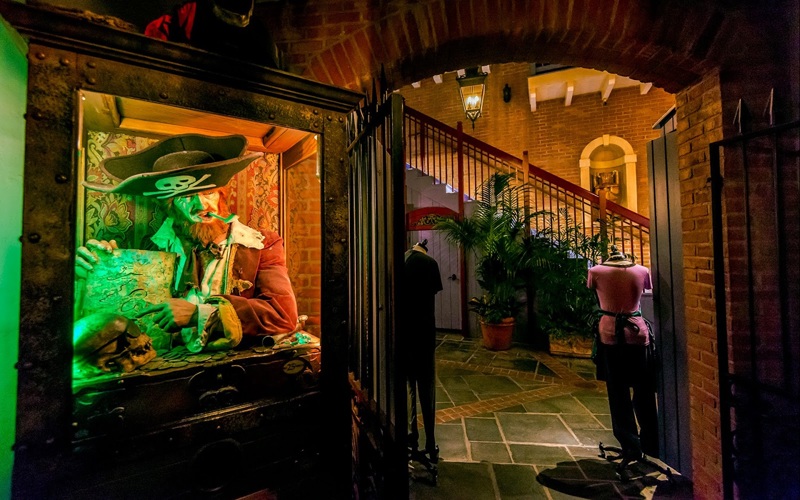What We Learned from the D23 Gold Member Live Stream Celebrating “The Happiest Place on Earth”
D23 Members could head into the D23 Gold Theater online earlier this week to catch a special stream just for them, hosted by Disney Legend Don Hahn and Imagineer Christopher Merritt as they discussed the book they wrote together, The Happiest Place on Earth, celebrating the 70th anniversary of Walt Disney’s original Magic Kingdom, Disneyland.
During the presentation, which truthfully was just the duo talking for an hour with occasional imagery, they continuously referenced their book while teasing some fun information. While most D23 Gold Members likely know 95% of the information given, there were a few fun notes worth repeating, including an abandoned attraction concept that has been largely rumored to exist but never confirmed…until now. Here’s a few fun things we learned by watching this stream.
An Out of Pocket Experience
It’s fairly common knowledge that Imagineers were hand picked by Walt Disney himself from his arsenal of artists and creatives to help design his new amusement park venture, thus creating WED Enterprises. What might not be common knowledge is that this firm was almost called “Walt Disney, Inc." It seems that the actual board of Walt Disney Productions wasn’t too keen on the idea of Disneyland and didn’t approve funding for it, thus causing Walt to create his own new company to hire and pay the Imagineers out of his own pocket. He called this company Walt Disney Inc, but to prevent any confusion between the two, he changed the name to his initials, WED.
About A Year
While this isn’t something I learned per se, it’s always crazy to think about how fast Disneyland was built, especially in comparison to how Disney Parks approaches their projects today. Merritt and Hahn both emphasize this point addressing that Disneyland Design work really started in 1953, ramping up into 1954, with construction of the park really only starting a year ahead of the opening date - July 17th, 1955.
In fact, one thing we did learn from Disney Legend Bob Gurr, who made an appearance in the livestream, was that this was a conscious decision of Walt’s. According to Gurr, he would give the design and construction teams an opening date deadline PRIOR to describing what he wanted. Thus, giving that extra oomph to figure it out and get it done.
This is in stark contrast to the way things are done today, with single attractions taking multiple years after they are even announced - which is usually later in the design process. The current timelines are even more aggravating when you think more deeply about them. TRON Lightcycle / Run - a near copy and paste of an existent blueprint in Shanghai was announced for the Magic Kingdom in 2017, and finally opened to guests in 2023, roughly six years later. Tiana’s Bayou Adventure, which was placed into an existing attraction space was announced in June of 2020, with initial announcements saying the project (though reportedly in development since The Princess and the Frog came out in 2009) went into serious design in 2020 and didn’t open to guests until 2024. Five years for an attraction that was practically already built. And don’t even get us started on that planter box outside of Tomorrowland.
To think back and realize that a full theme park and the attractions that it contained were fully completed in basically a year is frankly astounding.
Presented By
Disney Parks are no stranger to sponsors. Over nearly 70 years, Disneyland has had many, many sponsors. As the duo delved into the background of Main Street U.S.A. at Disneyland, they discussed many of the stores that everyone knew and loved over the years - yes, even the infamous “Wizard of Bras" was included in the discussion. But one thing that was brought up were the many sponsors - all of which Walt insisted were companies that were around at the turn of the century - the period in which Main Street U.S.A. is set. Some of these include Upjohn Pharmacy, Wurlitzer, and Bank of America. The duo also reminded us of a fun artifact from the original Bank of America location that guests can still find today in the Disney Gallery store near the opera house - the former location of the Bank - they can still find the vault, though now it showcases some of the more expensive and rare artwork.
Main Street U.S.A. wasn’t the only location in which there was a sponsorship stipulation. There was one in Tomorrowland that was a bit more contractual in nature. Despite the last section talking about how fast the park was built - Tomorrowland was just under the wire, with our hosting duo pointing out that with everything else in the park, it was almost an afterthought. We did get a Tomorrowland at opening though, complete with attractions even though some were clearly meant to be temporary (20,000 Leagues Under the Sea sets) or very rushed. Among them was the Kaiser Aluminum Hall of Aluminum Fame - but as part of the sponsorship, it was deemed that Aluminum must be used in the construction of the land and used whenever possible.
An Apple A Day Keeps WED Busy
Still in Tomorrowland, the gang also approached the topic of various ride vehicles - including the debut of the omnimover on Adventure Thru Inner Space and later, the Haunted Mansion. While Bob Gurr also appeared and shared more about the design of the omnimover, it was Merritt who mentioned that the signature rotating motion came from a moment of inspiration from John Hench, who was twirling an upside down apple on its stem.
Rotating the stem between his thumb and forefinger, the apple would in turn, rotate, allowing Hench to show off what particular side he wanted to see - suggesting that’s what they could do with guests to rotate them to focus their eyeline and attention.
Red-ioactive Remnants
Hahn and Merritt were deep into their New Orleans Square segment of the livestream, discussing Pirates of the Caribbean. They mentioned and mocked the long standing theme park trope of a gift shop at the exit of every attraction, a trope that is largely based on modern Disney theme parks. They emphasized the point that after you get off Pirates of the Caribbean you don’t exit into a gift shop - you exit NEXT to a gift shop. While that may be a store now, peddling Pirates garb (called Pieces of Eight), it wasn’t always that way. Formerly, it was the location of a Pirate Arcade. And not one where you’d find video games or some Dance Dance Revolution (is that still a thing?), but instead nickelodeons and amusements similar to what would find at the Penny Arcade on Main Street U.S.A. All of which had been modified to share the pirate theme.
One of those modified machines can still be found today, known as Fortune Red. While many know this arcade fortune teller and its existence, many may not realize that this dates back to an earlier era of the park. Especially considering that it can be accessed and operated through the modern Play Disney Parks app.
And probably the most mind-blowing revelation of the panel, leading us to wonder if anything in the book will top it, is an abandoned attraction concept that had guests literally looking for remnants of things in Tomorrowland. Merritt and Hahn tell the story about a meeting they had with president of the Walt Disney Archives Becky Cline, going through stuff for Disneyland. Together they found a box that Cline herself said had not been looked at or opened in a very long time and Merritt described opening it to find a gold mine.
What they found was concept art created by Claude Coats for an attraction called “Uranium Hunt." The attraction would see guests pick up a geiger counter and go into a dedicated landscape in Tomorrowland looking for deposits of radioactive material. After completing the attraction, upon exit and returning their geiger counter, they would receive a small block of uranium to commemorate their visit.
The attraction had been long-rumored, and almost deemed mythical as it was never confirmed to exist, even though it was never-built. Now, their finding verifies that this attraction was in fact developed at some point for guests to enjoy(?) in Tomorrowland.
The art for Uranium Hunt and other amazing pieces are featured in the book, which was created for Disneyland’s 70th anniversary. This treasure trove of Disney history will take fans through the pre-production and realization process Walt used during the earliest days of his nascent theme park, and like the livestream, is organized by the five original lands. The book also features a rare look into the renowned vault of the Walt Disney Imagineering Art Library and other unique sources, including private collectors and the Library of Congress, showcasing concepts for both realized and unrealized attractions designed solely for Disneyland, including recently discovered artwork and many previously unpublished documents and images. You pick it up over at Amazon.


